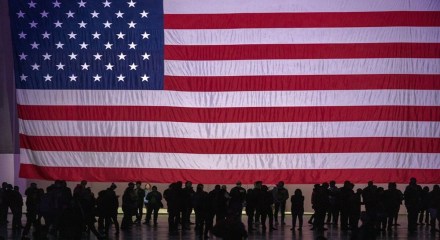The Trump administration used a flawed Department of Homeland Security overstay report to bar people from immigrating or gaining temporary visas in a new travel ban and is likely to continue citing the report in an illegitimate manner, finds The National Foundation for American Policy (NFAP) in a recently conducted study.
Most remarkably, the administration cited overstay data on temporary visas for several countries to bar people from immigrating to join U.S. citizens or lawful permanent residents permanently, even though it is impossible to overstay a green card.
The Trump administration cited overstay rates for temporary visas in countries to prohibit people from immigrating and staying permanently in America. It is impossible to overstay an immigrant visa (a green card) since people can permanently remain in the United States on such visas.
The DHS report contains significant flaws and should not be used to enact broad travel bans, deny student visas or make other immigration policy changes, according to the NFAP study.
The DHS overstay rate for F-1 international students and others is not an actual overstay rate but only an upper bound estimate of individuals who DHS could not positively identify as leaving the United States.
An overstay is defined as a nonimmigrant who was lawfully admitted to the United States but remained in the United States beyond the authorized period of admission,” according to the DHS Entry/Exit Overstay Report Fiscal Year 2023 published in August 2024.
“The DHS figures represent actual overstays plus arrivals whose departure could not be verified,” according to demographer Robert Warren. “That is, they include both actual overstays and unrecorded departures.” Problems with DHS systems correctly identifying individuals who changed status inside the U.S. or left the country render the reports inappropriate for policy purposes.
On June 4, 2025, Donald Trump issued a proclamation banning the entry of persons issued immigrant visas at a consulate (but who are not yet lawful permanent residents) and the entry of persons with temporary visas from 12 countries and made a similar ban for 7 other countries, but limited the entry ban on temporary visas to tourists and business travelers and students and exchange visitors.
For 15 of the 19 countries, the proclamation cited overstay rates as the primary or secondary reason for banning, with some exceptions, immigrants and temporary visa holders from the countries.
Although illogical, the Trump administration cited overstay rates for temporary visas in countries
to prohibit people from immigrating and staying permanently via green cards.
The travel ban proclamation significantly overstates the number of overstays from individual countries by counting people who had already left the country, individuals who briefly stayed past September 30th and left the U.S. and people who changed status inside the United States.
In the FY 2023 DHS overstay report, the “suspected in-country overstay” rate for B1/B2 visa holders dropped from 6.94% at the end of FY 2022 to nearly half 15 months later, to 3.87%, indicating that the overstay rates for countries cited in the travel ban are significantly inflated.
It takes time for DHS systems to catch up and properly record people who have changed status or left the country. DHS acknowledges people often receive extensions after arriving in the United States.
